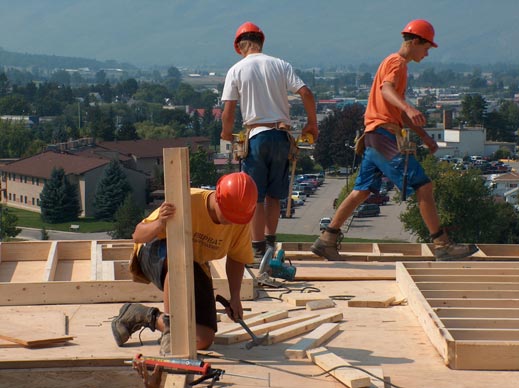Economy

Construction sector added 25,000 jobs in September
Written by David Schollaert
October 24, 2024
The construction sector added 25,000 jobs in September, driven by labor shortages and improved wages, according to data released by the US Bureau of Labor Statistics.
Repeated gains were seen across all subsectors, with wages continuing to outpace increases in the broader economy. Construction employment is up by 238,000 jobs, an increase of 3% vs. year-ago levels.
The construction industry added jobs for the fifth straight month, a theme driven by a limited workforce unable to keep pace with demand. It continues to boost the construction job market.
“Beyond the construction industry, this jobs report blew past expectations,” said Anirban Basu, ABC’s chief economist, noting, “US employers added 254,000 jobs for the month, the most since March.”
Nonresidential construction employment increased by 17,900 net positions, with growth in two of the three subcategories. Non-res specialty trade saw the largest boost with 17,000 added positions. Heavy and civil engineering added 3,800 jobs, while non-res building lost 2,900 positions.
“While the ongoing strength of the labor market and consumer spending indicates that the economy has weathered high interest rates better than anyone thought possible, the combination of rising household debt levels and economic uncertainty surrounding geopolitics and the looming election will potentially weigh on growth in the coming months,” added Basu.
The unemployment rate among jobseekers with construction experience was 3.7% in September, while unemployment across all industries decreased a percentage point from August to 4.1%.

David Schollaert
Read more from David SchollaertLatest in Economy

US sets Section 232 tariffs on trucks and buses
Medium- and heavy-duty trucks (MHDV) and buses imported to the US will start being charged Section 232 tariffs beginning Nov. 1.

AMU: Consumer auto delinquencies: Warning sign for consumer health?
The Consumer Federation of America estimates rising total auto debt at a staggering $1.66 trillion, along with increasing repossessions and a sharp increase in delinquencies.

Beige Book: Regional market growth remains mostly flat
Economic growth in some US regions in September was offset by challenges in others, causing the market to appear largely unchanged overall, according to the Federal Reserve’s latest Beige Book report.

ISM September survey captures deepening manufacturing gloom
The Institute for Supply Management’s (ISM) latest monthly report on manufacturing reflects a bleak view of American industry in September.

Key industries concerned over government shutdown’s impact on steel, manufacturing
Trade groups cautioned that a prolonged shutdown could strain US industry.
